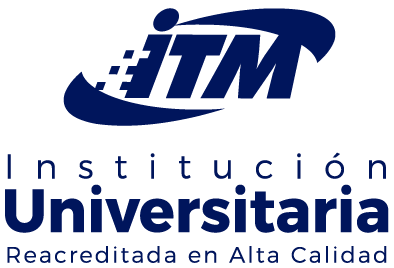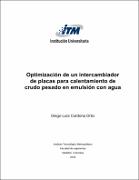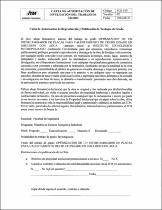Mostrar el registro sencillo del ítem
Optimización de un intercambiador de placas para calentamiento de crudo pesado en emulsión con agua
| dc.contributor.advisor | Herrera Múnera, Bernardo Argemiro | |
| dc.contributor.author | Cardona Ortíz, Diego Luis | |
| dc.date.accessioned | 2017-11-10T17:09:47Z | |
| dc.date.accessioned | 2019-02-28T21:12:55Z | |
| dc.date.available | 2017-11-10T17:09:47Z | |
| dc.date.available | 2019-02-28T21:12:55Z | |
| dc.date.issued | 2017 | |
| dc.identifier.uri | http://hdl.handle.net/20.500.12622/123 | |
| dc.description.abstract | En los pozos de extracción de crudos se presentan emulsiones de crudo-agua. Para el transporte de estas, es necesario romper la emulsión. Existen variadas formas de lograr este fin, una de ellas es el calentamiento del fluido. Normalmente son usados intercambiadores de calor de coraza y tubos, que son difíciles de transportar por sus grandes dimensiones, tópico que aumenta el costo de operación en perforaciones nuevas. En este trabajo se propone como opción de calentamiento el uso de intercambiadores de placas, los cuales tienen unas dimensiones considerablemente menores logrando resultados satisfactorios y haciendo posible la portabilidad de los mismos. Se hizo una optimización mediante superficies de respuesta para hallar una geometría de PHE (Plate Heat Exchanger) ideal para operar con crudos pesados. Los resultados muestran como con una misma superficie de transferencia, el PHE logra una temperatura de salida mayor al STHE (Shell and Tube Heat Exchanger), mientras que en caída de presión este último tiene un rendimiento muy superior | spa |
| dc.format.medium | Recurso electrónico | spa |
| dc.format.mimetype | application/pdf | |
| dc.language.iso | spa | |
| dc.publisher | Instituto Tecnológico Metropolitano | spa |
| dc.rights.uri | http://creativecommons.org/licenses/by-nc-nd/4.0/ | * |
| dc.subject | Extracción | spa |
| dc.subject | Petróleo | spa |
| dc.subject | Crudo pesado | spa |
| dc.subject | Emulsiones | spa |
| dc.subject | Intercambiadores de calor | spa |
| dc.subject | Procesos químicos | spa |
| dc.subject | Procesos de manufactura | spa |
| dc.subject | Industria petrolera | spa |
| dc.subject | Industria petrolífera | spa |
| dc.title | Optimización de un intercambiador de placas para calentamiento de crudo pesado en emulsión con agua | spa |
| dc.publisher.faculty | Facultad de ingenierías | spa |
| dc.publisher.program | Maestría en Gestión Energética Industrial | spa |
| dc.description.abstractenglish | Crude-water emulsions are present in oil extraction wells. To transport these, it is necessary to break the emulsion. There are several ways to achieve this; one of them is the heating of the fluid. Shell and tube heat exchangers are often used, which are difficult to transport due to their large dimensions, which increases the cost of operation in new drilling. In this work, it has proposed as heating option the use of plate heat exchangers, which have considerably smaller dimensions making them portability possible and so achieving satisfactory results. An optimization was made by response surfaces to find an ideal PHE (Plate Heat Exchanger) geometry to operate with heavy crudes. The results show that with the same transfer surface, the PHE achieves a higher outlet temperature than the STHE (Shell and Tube Heat Exchanger), while in pressure drop the latter has a higher efficiency | eng |
| dc.description.degreename | Magíster en Gestión Energética Industrial | spa |
| dc.identifier.instname | instname:Instituto Tecnológico Metropolitano | spa |
| dc.identifier.reponame | reponame:Repositorio Institucional Instituto Tecnológico Metropolitano | spa |
| dc.identifier.repourl | repourl:https://repositorio.itm.edu.co/ | |
| dc.rights.local | Acceso abierto | spa |
| dc.rights.accessrights | info:eu-repo/semantics/openAccess | |
| dc.rights.creativecommons | Attribution-NonCommercial-NoDerivatives 4.0 International | * |
| dc.type.local | Tesis de maestría | spa |
| dc.type.coar | http://purl.org/coar/resource_type/c_bdcc | spa |
| dc.type.driver | info:eu-repo/semantics/masterThesis | spa |
| dc.publisher.grantor | Instituto Tecnológico Metropolitano | spa |




